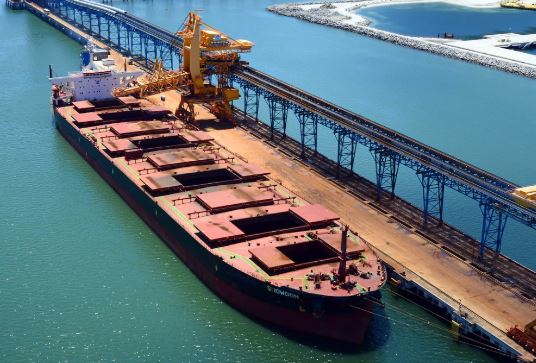Capesize freight rates dipped slightly despite better shipping demand seen in both basins that kept up the bullish market momentum.
Thus, the Capesize 5 time charter average faced some correction and fell by $117 day-on-day to $18,896 on Wednesday.
Following the dip, the Baltic Dry Index (BDI) dropped by 0.59% day-on-day to 1,509 readings.
Concerns over Typhoon Bavi
The declining paper market reflected trade concerns over potential freight correction at the aftermath of Typhoon Bavi, when there might be an influx of tonnages returning to North China region and depressed freight rates.
In the meantime, there was still healthy demand in the Pacific which heard shipping enquiries from Malaysia and Russia as well as in the key west Australia to China route.
Rio Tinto was heard to fix a vessel for the Dampier to Qingdao route, done around at the $8.30-$8.40/wmt range for early Sep laycan.
Meanwhile, there was some improvement in the Atlantic market as well with more miners and operators being active in the market.
Thus, there were higher bids for second-half September out of Brazil with more interests on the buy side from the operators.
Bunker prices firm by crude oil movement
VLSFO prices rose again by $2.50 day-on-day to $353/mt at the port of Singapore, benefiting from the firmer crude oil prices movement.
Crude oil prices received a boost as the Energy Information Administration (EIA) reported that U.S. commercial crude oil inventories to decrease by 4.7 million barrels from the previous week.
Besides, tropical storm Laura is expected to strengthen to Category 3 hurricane before striking the Gulf of Mexico on Aug 27-28, where around 300 oil offshore platforms and 11 drilling rigs had already been evacuated.
Both these factors lifted crude oil prices with Brent crude oil prices toward the $45 per barrel mark, while the WTI crude strengthened to $43 per barrel.
